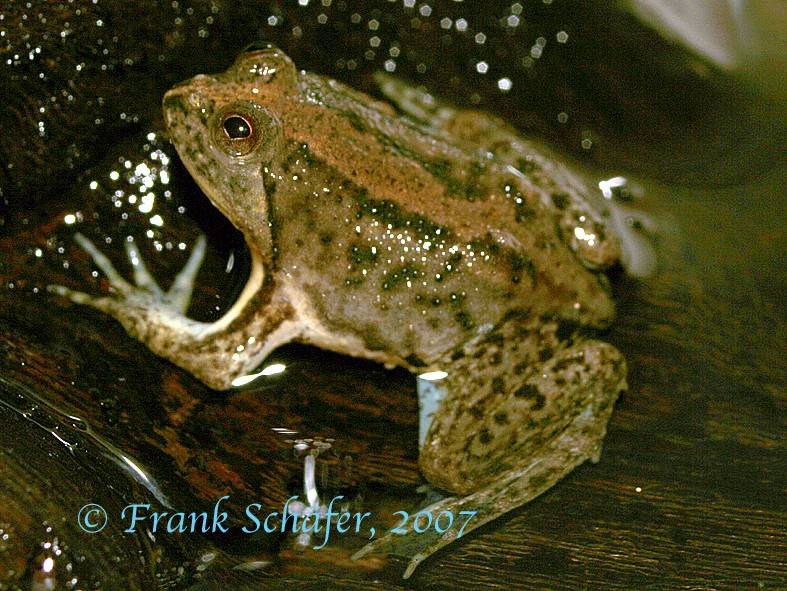The main collecting season of the beautiful gold seam sucker cats of the genus Baryancistrus starts around end of may and lasts until the end of september. Although these fishes are common in the wild, live in shallow waters and are traditionally used as food fish, they cannot be connected with one of the about 700 species of Loricariidae known to science. In the ornamental fish trade they have that fore L-numbers to have at least a basis for communication.
All these gold seams originate from the Rio Xingu and its tributaries. Four colour varieties can be recognized: L18, the “golden nugget”, which has relatively large spots. It comes from the main Xingu River. The spots in L81 are much smaller and more numerous. Both forms (L18 and L81) seem to live syntopically in the wild. The largest spots of all has L177, which is collected in a tributary of the Xingu, namely the Iriri River. Quite recently another variety came in the market, which has the spots like L81, but has much broader seams in the dorsal and the caudal fin. This fish is termed as L81n in the trade (the “n” stands for “new”). The exact origin of this fish is still unknown, but it seems that it is also collected in the Xingu.
In all four L-numbers the number, size, and colour of the spots varies, which is also true for the broadness of the seams of dorsal and caudal fins. So in some cases it is not possible to determine a single specimen for sure. Fully grown specimens of all four L-numbers (they can reach about 30 cm in length) more or less look all the same. Their spot are much smaller. Nevertheless it is still unclear if the four L-numbers represent different species, morphs or populations. Breeding of these Baryancistrus in the home aquarium is possible, but a rare event. The fish are typical cave brooders. It is difficult to fulfil their needs in the tank, so there are very few reports on successful breeding.
First of all one must know that the Xingu river has relatively warm water the whole year through. The catfish are very sensitive against water temperatures below 28°C. The other fact is that these Baryancistrus species are used to feed the whole day through, because the food contents only very few nutrients. One or two feedings a day is definitely too less for these fishes. Alt least one must realize that Baryancistrus are territorial and quarrelsome fish. Specimens larger than 20 cm need a lot of space.
All in all one must say that Baryancistrus L18, L81, L81n and L177 are beautiful and desirable fish, but a successful keeping and breeding is possible only for those who are willing to fulfil the very special requirements of these species.
Text & Photos: Frank Schäfer
Please note that we supply the wholesale trade only
Addendum: In the meantime the fish have been described scientifically under the name of Baryancistrus xanthellus.
| Angaben zum Tier |
| Herkunft |
Brasilien/Brazil |
| Verfügbare Größe in cm |
5-15 |












 There are two species of Black winged dwarf hatchets recognized. These charming little creatures hardly reach 3 cm in length. From Peru we get occasionally Carnegiella schereri with a spotted belly as a so-called by-catch of C. strigata, whereas Carnegiella marthae from Brazil has a lined belly and is now and then available assorted (214003).
There are two species of Black winged dwarf hatchets recognized. These charming little creatures hardly reach 3 cm in length. From Peru we get occasionally Carnegiella schereri with a spotted belly as a so-called by-catch of C. strigata, whereas Carnegiella marthae from Brazil has a lined belly and is now and then available assorted (214003).






































































 First time imported: a brand new and undescribed snakehead from India; Channa sp. . So far we only know that this fish belongs to the same group as Channa bleheri. Therefore we believe that the max.size will be around 12cm. As soon as we will get more information about them , we will share with you!
First time imported: a brand new and undescribed snakehead from India; Channa sp. . So far we only know that this fish belongs to the same group as Channa bleheri. Therefore we believe that the max.size will be around 12cm. As soon as we will get more information about them , we will share with you!



 Just in time for the new year, the “Aqualog Calendar-Yearbook 2008” is out now.
Just in time for the new year, the “Aqualog Calendar-Yearbook 2008” is out now.





















































